What Is A Standby Generator? Pros & Cons With Tips
In this article, we explained what is a standby generator, the Pros, and Cons of Whole House Generators, how to pick, and Factors To Consider Before Installation, based on noise, cost, portability, power, ROI, value, and overall convenience.
It is very hard to imagine living without power/electricity for a long time. But these kinds of circumstances are becoming common with each passing day. People who are not already prepared to confront such long power outages will face much trouble.
Fortunately, no one has to bear long-time power loss as standby generators are available in markets. Standby generators are automatically operating backup electrical systems. After sensing the power loss that can occur at anytime, a generator’s automatic transfer switch will give a wake-up call to the generator. It will then supply power to all the circuits in your home.
Standby generators prepare people to overcome storms and natural disasters by acting as an indispensable addition to any home.
In this article, we will find out what is a standby generator. And why it is important.
How Do Standby Generators Work?
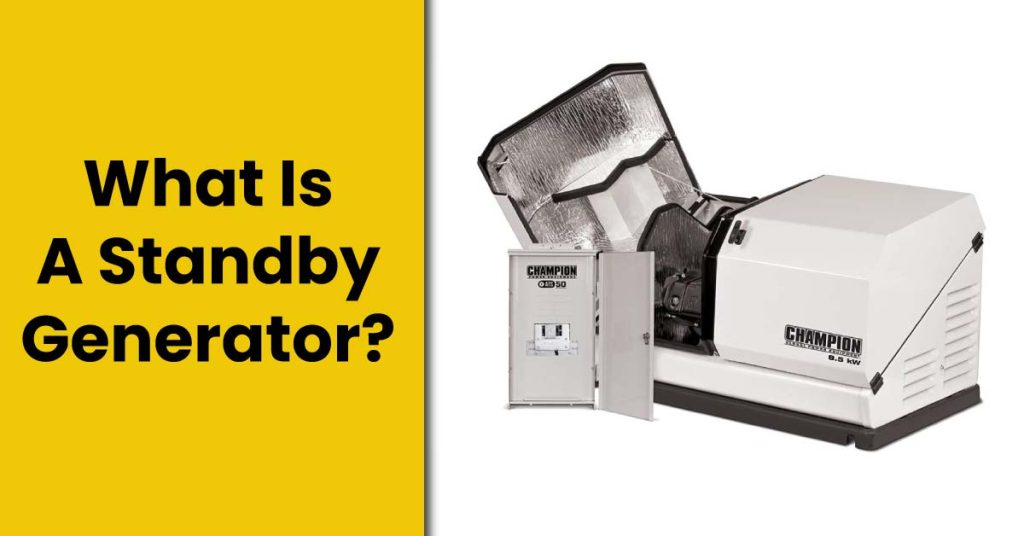
Viable standby generators are directly linked to the electrical panel of your facility and get power by using an external fuel supply such as natural gas or diesel. While other commercial generators decide about power by the size of the generator and type of fuel.
These generators are usually paired with an Automatic Transfer Switch that promptly kicks in the standby generator within seconds of power loss due to a power outage.
An Automatic Transfer Switch works in a way by switch disconnecting your facility from the main utility power grid after the power breakdown.
After safely disconnecting the facility from the power grid, next, you will need to switch the generator to start power generation to the electrical panel of the facility.
After bringing back the power of the main grid, the automatic transfer switch will shut down the generator and reconnect the facility to the main power grid. One major safety feature of using a generator with an ATS is its ability to prevent back-feeding electricity to the grid.
If you don’t know what back feeding is, then it is a dangerous phenomenon that occurs when a generator sends electricity to the main grid which leads to fires, injuries, and even proves fatal to your utility workers that work on power lines in order to restore power to your area.
If you go for installing an ATS with your generator, you can try an alternative source such as MTS or Manual Transfer Switch which will require someone to physically be next to the generator and switch the flip.
In addition to the contingency plan, it will require to be set in place in the event of a power outage in a way that the employee will call to turn on the generator when power is out and turn it off when power is restored. This will increase the potential harm to the employee as well as raise the risks of back-feeding occurring.
How To Pick A Standby Generator
These things are important to consider while picking up the right standby generator.
Pick a Fuel Source For selecting a good-quality standby generator, the first thing you need to consider is identifying the type of fuel. A standby generator having power up to 22kW will be either natural gas or liquid propane but in order to look for a generator that runs on diesel, you will need to opt liquid-cooled whole-house type of generator that will cost you more.
The tank will be required by both liquid propane and diesel fuel generators that should be large enough to run the generator in a proper way. In the same way, a natural gas meter and gas lines of the correct size will be needed.
Before installing, most of the information you will get through the contractor but you can also find this information inside the manual.
Determine Power Needs:
The next thing you need to do is to find out the amount of power you will need during the breakdown. Also, the type of devices you want to power up such as refrigerators, air conditioners, or the entire whole will also decide about the power needs.
Power Ratings:
Large standby generators are rated by kilowatt which decides the electrical power output of the generator. The best way to determine the power needs of your home will need to make a decision about appliances you want to power up such as a central air conditioner, HVAC, or other heavy devices during a blackout as all these things will require the highest demands of electricity.
Do not forget that during summers, a sweltering blackout can make life miserable and in winter an ice storm can crash your amazing holiday plans by leaving the pipes susceptible to bursting. So, it is essential to consider backing up the heating and cooling system of your home.
Sizing Your Standby Generator:
So, how do you know what size generator you’ll require? One technique is to look for the size of BTUs or Tons on the air conditioning unit’s data plate. Each ton of capacity produces 12,000 BTUs and 3.517 kilowatts of energy.
For example, if you have a 3-ton (36,000 BTU) air conditioner, you’ll need a standby generator that’s 11kW or more.
Choose A Transfer Switch:

As your light bulb needs a switch to turn it on, your generator also needs one to do so.
An automatic transfer switch allows a generator to spring into action the moment automatically whenever a power failure is detected. It happens with the help of sensing utility power and after the detection of a power outage, it starts the engine promptly by disconnecting power entering from line to energize the panel of the home through the power of the generator.
Finding the right switch is also crucial just like choosing the right generator as they work together to regain the lost power.
To find out which will work best for you, there will be a need to know the total amperage of your electrical service panel. You can also get information about this by locating the main breaker of your electrical panel. You ask for help regarding verification from your installer.
Usually, an average-sized home has an almost 200-amp main breaker, which means the maximum amount of electricity your whole home can get is 200 amperes. While the smaller, as well as older homes, have 100 to 150-ampere service. So, it is very important to get the switch of the same amperage as your home’s panel.
Generator Remote Monitoring:
Many manufacturers are adding Wi-Fi options to their new standby generators. If you already own a standby generator that does not include built-in Wi-Fi, you can install a wireless monitor on your existing standby generator. With the help of Wi-Fi and a remote app, you can integrate your generator with a smart home, get diagnostics, and can also control it by using mobile devices.
Even if you are not at home, you can still check the condition of your generator as well as the current power situation.
Factors To Consider Before Installing A Standby Generator
There are the following important factors you should always consider before planning to purchase a standby generator:
Initial Cost: You should know the upfront cost of purchasing and installing a commercial generator.
Repair & Maintenance Costs: Though all types of generators need regular maintenance, diesel generators require very little maintenance as compared to their counterparts. That is why these generators are highly attractive for businesses.
Checkout our guide about how to maintain a generator
Fuel Costs: The amount of fuel needed to be consumed by your generator also matters a lot. It will keep your generator running up to the days you want it to run.
Fuel Storage: A natural gas generator does not need to store fuel due to its connection to the main gas pipeline. If there are no interruptions with the utility services, the generator will be capable of running and functioning whenever it is needed.
Where a diesel or standby generator will require a tank attached to the unit. If the tank of the generator is smaller then the generator will have to be refueled frequently to make sure power is being supplied continuously.
It will result in the need for storing additional fuel reserves on-premises or securing a steady delivery of diesel fuel including in the time of emergency.
Benefits Of A Standby Generator
Some additional benefits provided by a standby generator are:
Convenience: A home standby generator provides peace of mind even when you are away from it. Power restores to the critical systems automatically such as water, A/C, fridge, or an entire home. You can watch games or work on your PC continuously without any inconvenience.
Value: These generators are a great investment that pays for itself each time the power breakdown occurs while also increasing the resale value of your home simultaneously. It ensures to delivery of the cleanest power possible for sensitive electronics that are found in today’s homes.
Safety: With the help of a standby generator, you do not need to mess with gasoline or power cords. As a result, the risks of fire, carbon monoxide poisoning, and electrical shocks will be reduced.
Power: A standby generator with high wattage ranges can power more appliances for longer. Generators with the most power output are referred to as whole-house generators due to their capability to power the entire home if sized in a proper way.
Pros and Cons of Whole House Generators
Pros:
Cons:

Josh is a highly skilled electrician with specialized expertise in the field of generators. With years of experience under his belt, he has established himself as an expert in all aspects of generators, ranging from installation and maintenance to troubleshooting and repairs. Josh’s in-depth knowledge of electrical systems and his commitment to staying updated with the latest industry advancements make him a reliable and sought-after professional.

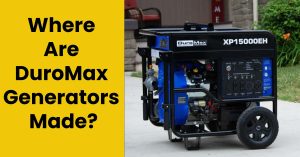
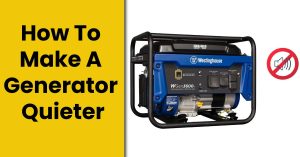
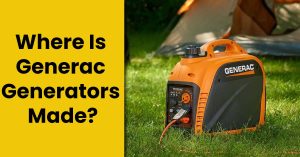
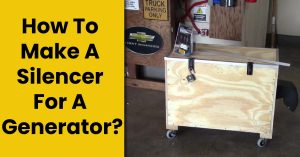
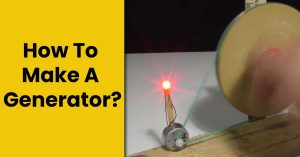
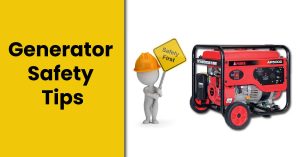
I like that you talked about how standby generators prepare people to overcome storms, and natural disasters by acting as an indispensable addition to any home. I was looking at a list of useful equipment earlier and I learned about how generators are used. According to what I’ve seen, it seems there are commercial standby generators too.